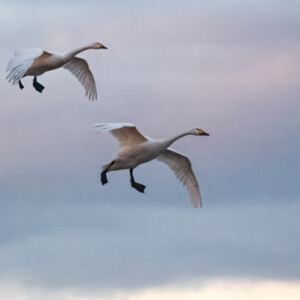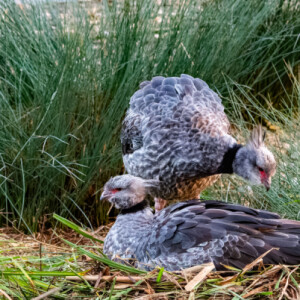Feeding time on the Rushy at WWT Slimbridge
Woodpeckers and I drove to WWT Slimbridge this afternoon in time to watch the mass feeding of birds on the Rushy lake at dusk. We managed to visit a few other locations within the site but the light was poor with extensive cloud cover. We saw lapwings, cormorants, avocets and various ducks at quite close quarters on South Lake. I also went into one of our favourite small pens, where birds have to be restricted from flying away within a large netted outdoor zone with their own pond.
I’m adding a couple of ‘Extras’ which on another day I might feature. They are two Southern Screamers from South America, and one of the black-bellied whistling ducks, which also normally hail from all of the Americas. I thought you might like to see them and maybe tempt you to visit Slimbridge and see them for yourselves.
At about 3-45pm we wandered into the Peng Observatory where there is seating behind wide glass windows overlooking the Rushy Lake, which is the exact location where Peter Scott originally watched the birdlife of the Severn Estuary when he first went to live at Slimbridge. More than a hundred people assemble there most days in winter to see the warden feeding the birds in a protected space, where they are able to roost safely. The warden has a radio microphone linked to the speakers in the observatory and he provides a detailed and fascinating account of what he is doing whilst also pointing out the birds and providing anecdotes about them and their lives. He wheels a barrow full of wheat and casts it out onto the water and small artificial islands created for the birds.
A key species to this spectacle are the Bewick's Swans which return each autumn from their breeding grounds on the coasts of the Arctic Circle in the north of Russia. But many other species such as pochard, lapwings, greylag and Brent geese as well as countless ducks.
The light was of course minimal for photography but I tried. The Bewicks and geese flew in odd family groups or solo. Apparently Maisie is one of the oldest of the current Bewick's swans aged 27. They have fantastically detailed records and can identify each bird by the distinct markings and shapes of their yellow beaks. At one point one group of Bewick's swans started apparently rampaging with very loud and vocal displays. I rather liked the sense of it being a chorus or swan song. By the time the feeding was complete it was virtually dark sp please excuse the resulting images filmed through the glass.




Comments
Sign in or get an account to comment.


